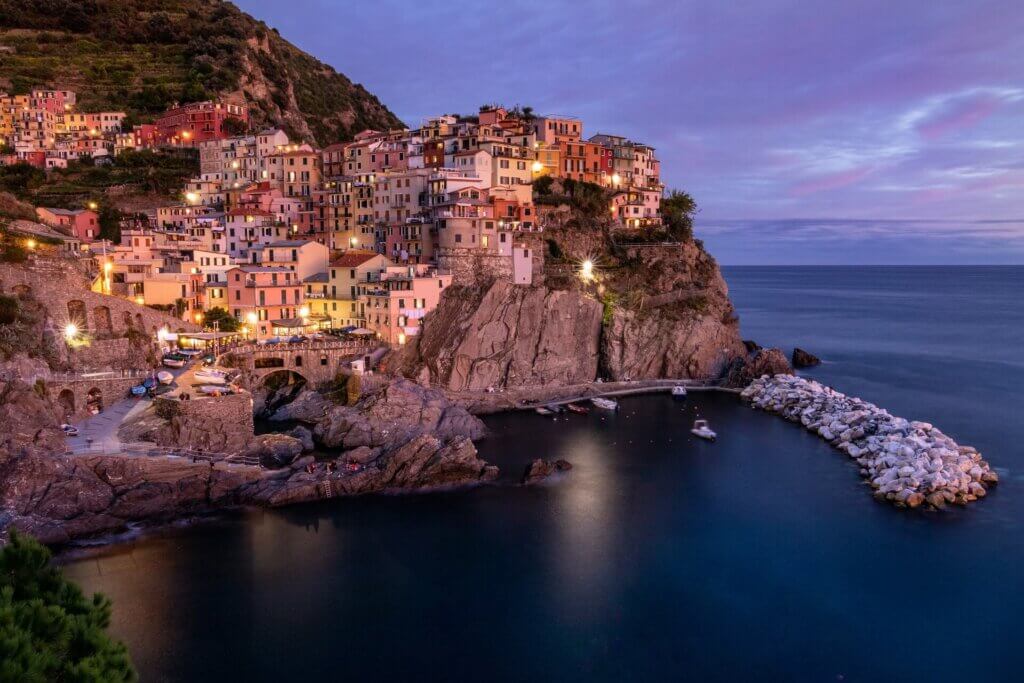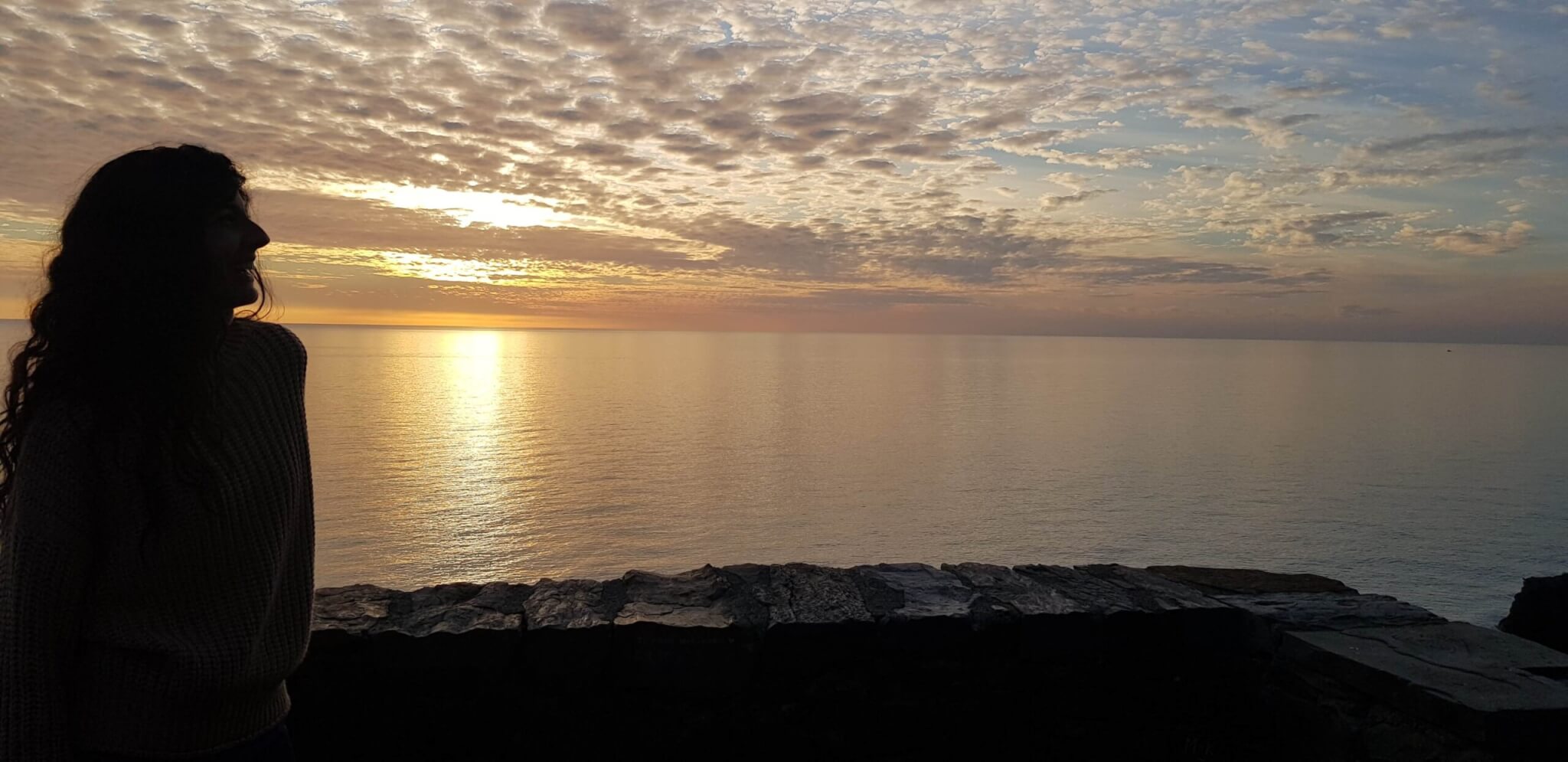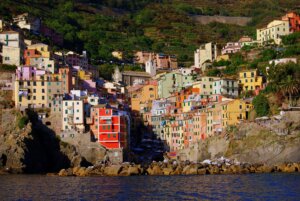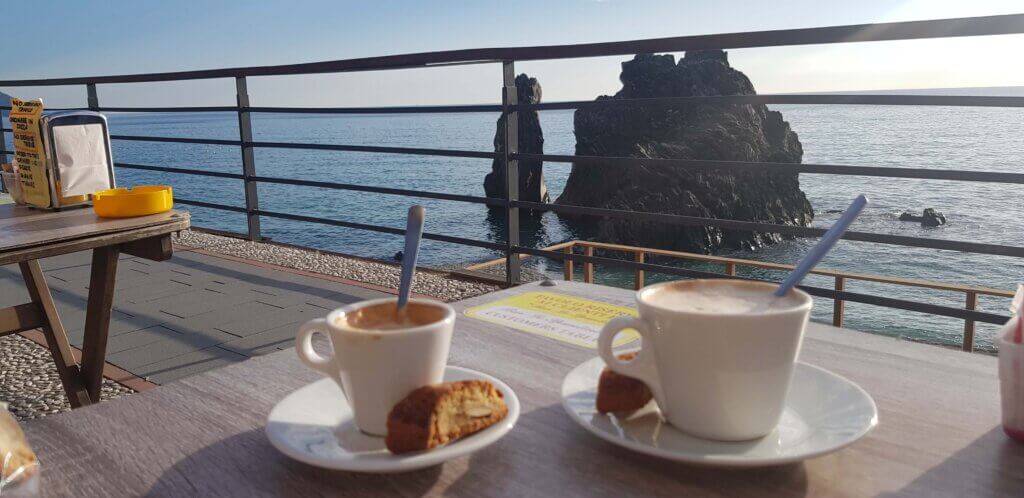 The province of La Spezia, in the Ligurian region of Italy, has a long history and some well-hidden gems. Its main city, Genoa, was once the center of a powerful marine republic, the Republic of Genoa, the homeland of Columbus.
The province of La Spezia, in the Ligurian region of Italy, has a long history and some well-hidden gems. Its main city, Genoa, was once the center of a powerful marine republic, the Republic of Genoa, the homeland of Columbus.
Among the most beautiful gems is Cinque Terre (Five Lands), national park and Cultural Heritage of Humanity by UNESCO.
In this place, we were able to enjoy some favorite things for us:
- Fascinating locations of bright colors located on cliffs above the sea.
- Hundreds of hiking trails that run through an unspoiled landscape framed by nature and wonderful views.
- Castles, walls and other ancient buildings.
- Many small beaches for all tastes, even some unspoilt and secluded.
Access

Our base of operations was the town of La Spezia, near Cinque Terre. You can find accommodation in one of the five villas that are within the Park (Riomaggiore, Monterosso al Mare, Manarola, Corniglia and Vernazza), but being highly touristic the costs are higher.
There are three ways to access these villages: by train, by boat and by car. The most popular being the use of the train. By car it is risky, given the topography of the area, very much given to landslides and road closures.
The ideal is to take a day visiting each village, to experience its beauties and the lifestyle of its inhabitants. Each train ticket to a destination of these from La Spezia can be between 4-6 euros.
If you want to visit the five villages and do not have much time, you can buy an unlimited single ticket for a day for 16 euros and you can come and go as many times as you want for 24 hours.
Riomaggiore

The first village on the train route from La Spezia is Riomaggiore.
We visited the Montenero and its chapel at the top: the Temple of the Madonna of Montenero, with almost seven centuries of history. The view is especially beautiful from its top and you can witness the stunning sunsets of the area.
Riomaggionre Castle is another attraction in the area. Built during the Republic of Genoa for the defense of the villa against pirates and barbarians. Today, it has one of the most beautiful views of the trails and the sea and is a place especially sought after by lovers for their encounters.
In the historic center of Riomaggiore is the Church of St. John the Baptist. It was partially destroyed by an earthquake in 1870 and then rebuilt.
Manarola
 A small villa half a kilometer from Riomaggiore, Manarola rests on a rocky cliff and the contrast between its multicolored houses and the bare and severe rock is very scenic. Its narrow streets flanked by old facades and balconies transport you to another era.
A small villa half a kilometer from Riomaggiore, Manarola rests on a rocky cliff and the contrast between its multicolored houses and the bare and severe rock is very scenic. Its narrow streets flanked by old facades and balconies transport you to another era.
In Manarola during December and January of each year they put together what they have called the “Largest Manger in the World“. Since 2007 it has become a tradition to put together a Nativity or Bethlehem, each year larger, and that is worth admiring.
We descended to the small port, with its little beach and boardwalk and some charming multicolored boats. From there, we ascend to the Mirador de Manarola, where you can fully appreciate the spectacle offered by the small port.
Vernazza
 The next village on the way is Vernazza.
The next village on the way is Vernazza.
Some say it is the prettiest village in the area. The truth is that this village had to be rebuilt after suffering devastating floods in 2011.
Here we visit the Church of Santa Margarita de Antioquía, which has undergone several renovations through the centuries that are changing its architecture. In the church square you can see the elderly ladies of the village who meet to discuss the latest local news… Rather, we believe, to tell the gossip of the moment.
We visited the Doria Castle and the Belforte Tower, built by the powerful Genoese family of the Doria. This castle was built for defensive purposes and today provides an unbeatable view of the town, the port and the sea. The viewpoints are must-see, each viewpoint of the villages will give you different perspectives of the area, all amazing.
Monterosso al Mare
 Monterosso al Mare is the busiest village in Cinqueterre and this is because it has the largest beach on this entire coast, Playa Fegina. For this very reason, Monterosso has a more robust tourist infrastructure than that of its sisters.
Monterosso al Mare is the busiest village in Cinqueterre and this is because it has the largest beach on this entire coast, Playa Fegina. For this very reason, Monterosso has a more robust tourist infrastructure than that of its sisters.
This beautiful sandy place has in the center and between the water and the earth a huge rock that is its most striking sign. There are all the beach services you need: restaurant, chairs, awnings, boats, water sports, etc.
By fegina beach, there is a gigantic statue. It depicts Neptune holding a huge shell. It weighs about 1,700 tons, and is 14 meters tall. She has resisted World Wars and storms since 1910 and stands powerful, as guardian of Monterosso.
The Blue Trail
 The Sentiero Azzurro, or “Blue Trail” is a hiking trail that takes place entirely within the Cinque Terre National Park, and connects the five main villages.
The Sentiero Azzurro, or “Blue Trail” is a hiking trail that takes place entirely within the Cinque Terre National Park, and connects the five main villages.
The road has historically been used by locals to travel on foot between villages in the area.
The road starts in Riomaggiore to reach Monterosso al Mare via Manarola, Corniglia and Vernazza and is about 12 kilometers long. You can travel between five and six hours.
As the area is rugged and subject to landslides and landslides, sections of the trail are often closed. So you have to find out in advance if you want to tour.
Conclusions
 Although on this occasion we did not meet the fifth village, Corniglia, we believe that we achieved our favorite expectations by coming to this beautiful coast.
Although on this occasion we did not meet the fifth village, Corniglia, we believe that we achieved our favorite expectations by coming to this beautiful coast.
Visit beautiful villages, full of history in an acording natural environment, where the sea, the mountains and centuries of history combine. Done.
Enjoy some of the most beautiful sunsets we’ve ever seen. Done.
Sit down to taste a delicious coffee (Italians are master baristas) by the sea. Done.
Tour picturesque shops. Done.
Take a photo tour in sections of the Blue Trail. Done.
This trip is definitely recommended for those looking for that special union between the picturesque, the natural, the historical and a great landscape.
